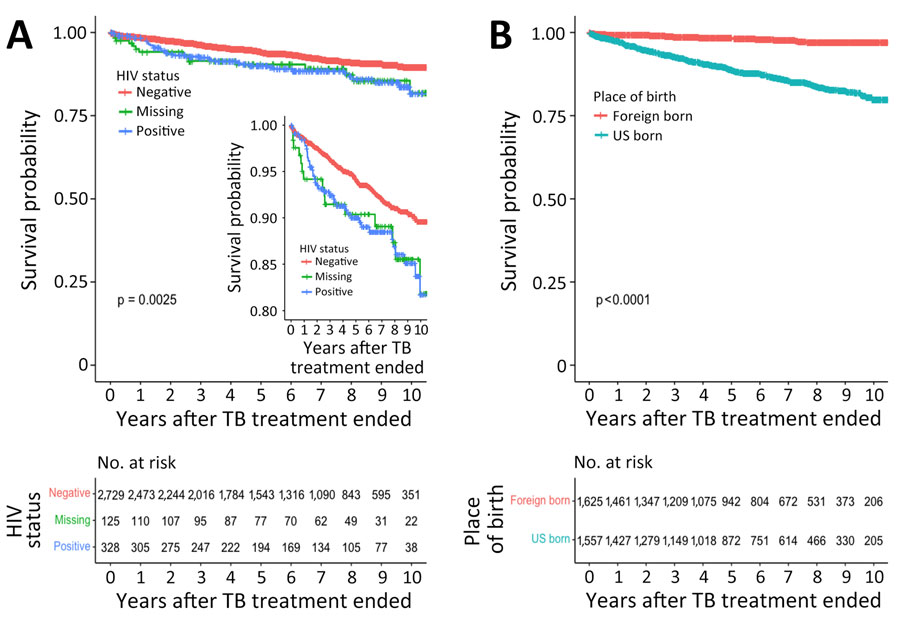Volume 30, Number 11—November 2024
Synopsis
Mortality Rates after Tuberculosis Treatment, Georgia, USA, 2008–2019
Figure 2

Figure 2. Survival probabilities in study of mortality rates after TB treatment, Georgia, USA, 2008–2019. Kaplan-Meier curves were used to plot survival probabilities of treated persons with TB over a 10-year period after treatment ended, stratified according to HIV status (A) and place of birth (B). Inset in panel A shows detailed curve with probabilities of 0.80–1.00. p values were calculated by log rank test. Number at risk tables below the curves indicate the total number of patients remaining in the study at each time point in each group, including any persons who experienced the event or were censored at that time point. Missing indicates missing data. TB, tuberculosis.
1Current affiliation: University of Colorado Anschutz Medical Campus, Aurora, Colorado, USA.